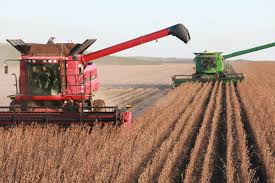Source:indiatoday.in
India is the largest producer and the second largest exporter of cotton in the world. Yet, for the farmers raising cotton crop the year 2017 was horrendous. Reason? Nearly 50 per cent of their yield was destroyed following an attack by the pink bollworm. This happened despite cotton farmers using nearly 55 per cent pesticides in India for their crop. The problem is not availability of pesticides. It’s the early detection of pests. A large portion of the cotton crop in 2017 could have been saved if farmers were able to identify pests at an early stage of infestation. Wadhwani AI aims to change that.
Wadhwani AI is a non-profit organization based in Mumbai. The organisation says that it is dedicated to using artificial intelligence for social good. The company focuses on using AI in their field of health and agriculture.
Before we understand what how this startup is helping the small cotton farmers in India, it is important to understand what leads to a large infestation, such as the one in 2017, that destroyed the crop. Small farmers primarily depend on field staff or the extension workers appointed by the government for advice. These extension workers visit farming plots in every village where pest traps – that are essentially sticky paper where pests get stuck – are placed. They manually identify the pests and count them for infestation. They enter this data on their smartphones and send them to experts for advice. When the experts analyse this data, they send their advice for the farms with infestation.
This technique is not very efficient as it is not very reliable. It is also time consuming. This is where the artificial intelligence based model developed by the Wadhwani AI, which of late is backed by some of the expertise from Google, comes into picture.
nstead of the extension workers manually identifying and counting the pests, the workers just have to take a picture of the pest trap. The AI model working in the background then recognizes various pests and it gives on-spot advice to the farmers by processing the data collected in the cloud. This data also goes to the experts for further analysis.
While this method is efficient it can be rendered ineffective, especially in the areas with low connectivity. Wadhwani AI has solved that problem by compressing its AI model such that it can work on a basic smartphone. “We are quite excited to announce that we have just achieved model compression that makes this AI model small enough to put on a really basic smartphone and hence this can now actually work offline,” said Raghu Dharmaraju, vice president, products and program, Wadhwani Institute for Artificial Intelligence. He was talking about the details of the programme at Google’s Solve with AI conference in Tokyo last week.
What is interesting about this feature is that it is not available as a standalone, rather it is an open source model that is available to any agricultural program around the world.
“By augmenting human skills, we are able to help millions of farmers right from the beginning. That’s technology at scale,” he added.
That leaves us with just one question: How does Google help here? Wadhwani Institute for Artificial Intelligence is one of the 20 winners of the Google AI Impact Challenge 2018 that provides a funding of $20 million along with mentorship to all the winners so that they can complete the first phase of their operations and scale them further. The institute is also one of the three winners from the Asia Pacific region. Basically, Google is empowering this company to improve its product and scale it up such that it can reach to farmers across the country.


